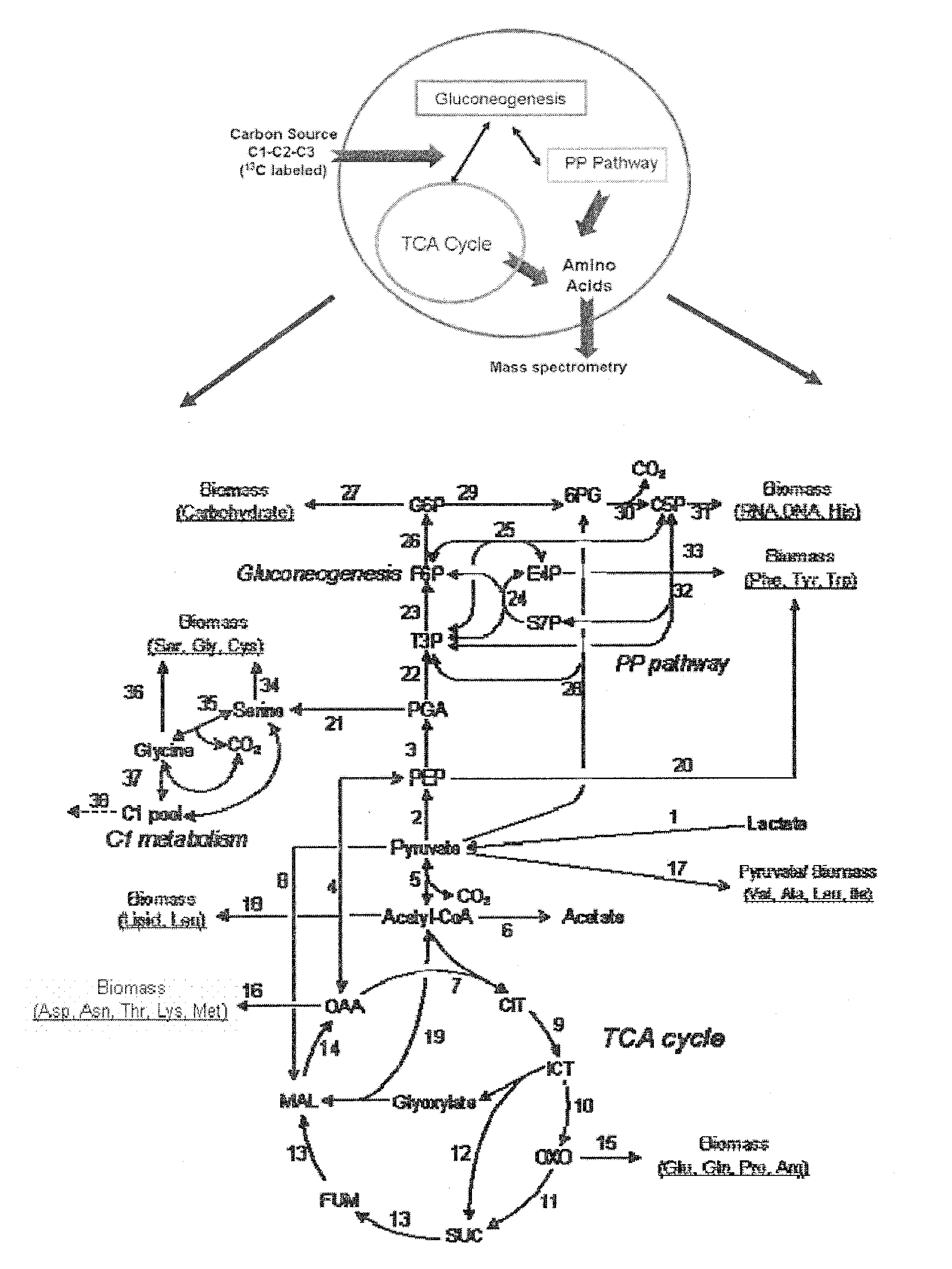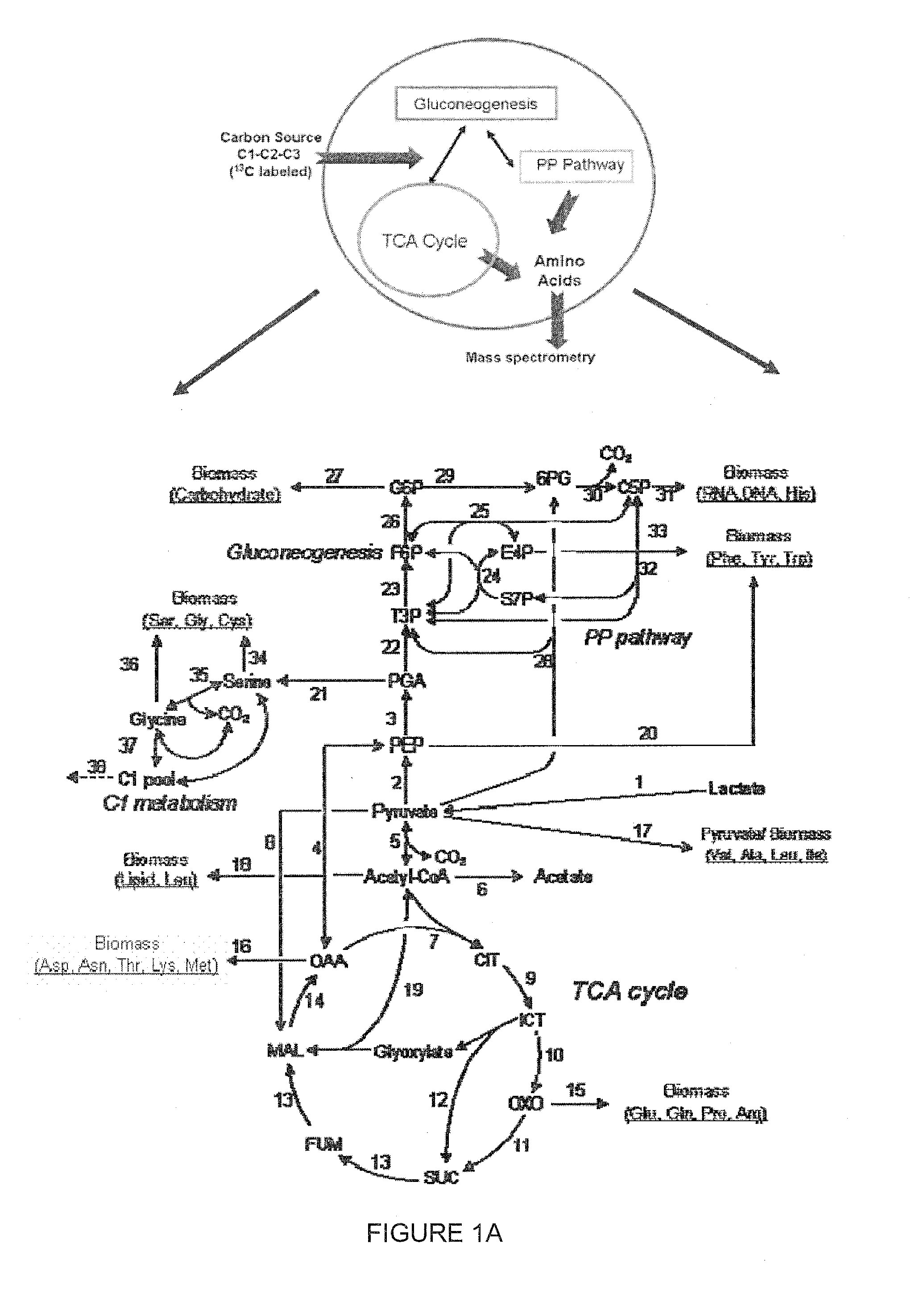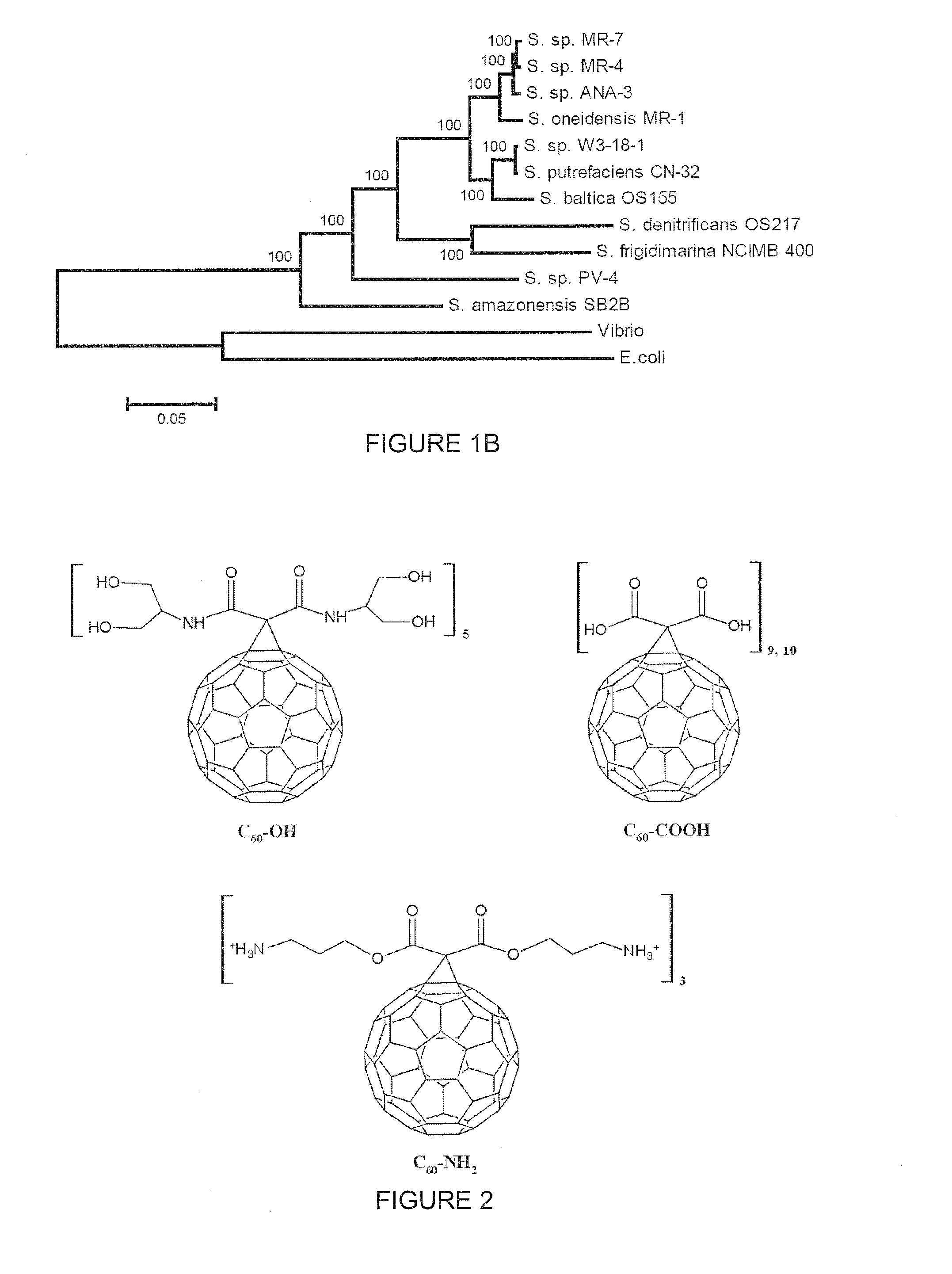Bioremediation of Nanomaterials
a nanomaterial and bioremediation technology, applied in biochemistry apparatus and processes, biological water/sewage treatment, treatment water, etc., can solve the problems of affecting the effect of nanoparticle antibacterial activity, the toxicological definition of fullerene is still controversial, and the exact molecular mechanism of bacterial growth inhibition is still not fully understood
- Summary
- Abstract
- Description
- Claims
- Application Information
AI Technical Summary
Problems solved by technology
Method used
Image
Examples
example 1
Materials & Methods
[0057]The effects of four types of fullerene compounds (C60, C60—OH, C60—COOH, C60—NH2) were examined on two model microorganisms (Escherichia coli W3110 and Shewanella oneidensis MR-1). Neutrally-charged C60 and C60—OH had mild negative effects on S. oneidensis MR-1, whereas the negatively-charged C60—COOH did not affect either microorganism's growth. Although C60—NH2 compounds caused mechanical stress on the cell wall or membrane, both S. oneidensis MR-1 and E. coli W3110 can efficiently alleviate such stress by cell aggregation and precipitation of the toxic nanoparticles. The effect of nanomaterial compounds on global metabolism can be investigated using [3-13C] isotopic labeling, which tracks perturbations to metabolic reaction rates in organisms by examining the change in the isotopic labeling pattern in the resulting metabolites (often amino acids). The 13C isotopomer analysis from all fullerene-exposed cultures revealed no significant differences in isoto...
example 2
Using Bacteria for Bioremediation of Nanomaterials
[0063]The effects of four types of fullerene compounds (C60, C60—OH, C60—COOH, C60—NH2) were examined on two model microorganisms (Escherichia coli W3110 and Shewanella oneidensis MR-1). Neutrally-charged C60 and C60—OH had mild negative effects on S. oneidensis MR-1, whereas the negatively-charged C60—COOH did not affect either microorganism's growth. Although C60—NH2 compounds caused mechanical stress on the cell wall or membrane, both S. oneidensis MR-1 and E. coli W3110 can efficiently alleviate such stress by cell aggregation and precipitation of the toxic nanoparticles. The effect of nanomaterial compounds on global metabolism can be investigated using [3-13C] isotopic labeling, which tracks perturbations to metabolic reaction rates in organisms by examining the change in the isotopic labeling pattern in the resulting metabolites (often amino acids). The 13C isotopomer analysis from all fullerene-exposed cultures revealed no s...
PUM
| Property | Measurement | Unit |
|---|---|---|
| concentrations | aaaaa | aaaaa |
| size | aaaaa | aaaaa |
| concentration | aaaaa | aaaaa |
Abstract
Description
Claims
Application Information
 Login to View More
Login to View More - R&D
- Intellectual Property
- Life Sciences
- Materials
- Tech Scout
- Unparalleled Data Quality
- Higher Quality Content
- 60% Fewer Hallucinations
Browse by: Latest US Patents, China's latest patents, Technical Efficacy Thesaurus, Application Domain, Technology Topic, Popular Technical Reports.
© 2025 PatSnap. All rights reserved.Legal|Privacy policy|Modern Slavery Act Transparency Statement|Sitemap|About US| Contact US: help@patsnap.com



